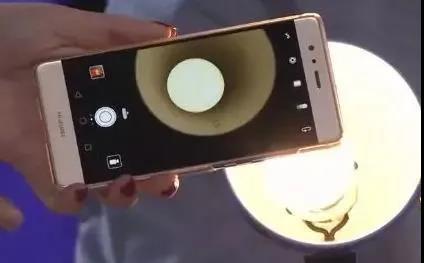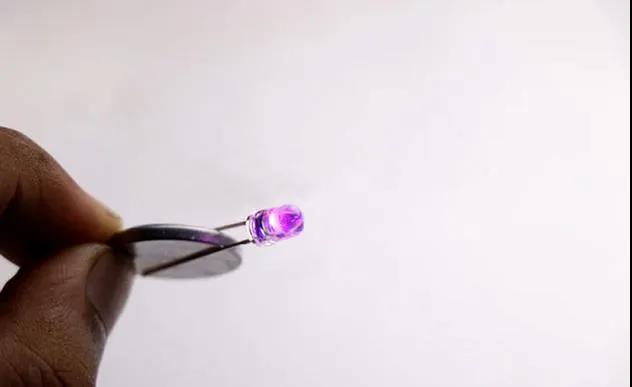Why do LED lights flicker on the camera?
The "stroboscopic effect" is a perceptible flickering effect that usually occurs when the phone is pointed at an LED light source.
Have you ever seen a mobile phone camera flickering when shooting an LED light source, but it is normal when viewed directly with the naked eye? You can do a very simple experiment. Turn on your mobile phone camera and point it at an LED light source. If your car has fluorescent lights, you can easily observe this strange phenomenon through the smart camera camera.

Flicker-free LED lights are protective for children's eyesight
In fact, the frequency of LED light source flickering is imperceptible to the human eye. Car review enthusiasts often encounter some crazy scenes: when taking pictures of cars, the car starts the fluorescent lights, and the final shooting effect will make them very frustrated. This stroboscopic effect can be simply explained as the conflict between the two lights.
What is the stroboscopic effect?
If you look through the previous physics books, you will find that people usually have a tendency, known as the "persistence of vision phenomenon", where we can continue to perceive things even if they are no longer in front of us. We can see "persistent images" instead of a set of discrete static images.
LED light sources flicker at high frequencies that are imperceptible to the naked eye, so we see the light is on until we turn the power completely off. Similarly, a video is actually a series of images captured in rapid succession at frames per second, and when we play games together, this continuous visual tricks our brain into perceiving events on the screen as one continuous fluid motion.
When the frames per second exceed the frequency of the LED light source, the mobile phone camera exhibits a noticeable flickering effect, which is the stroboscopic effect.
LED lights flicker when they are switched on and off quickly, and whether they flicker depends mainly on the nature of the current supplied to it. Typically, LED lights flicker at frequencies that are too high for the human eye to directly perceive, or invisible to the naked eye, so people can rest assured that any visible camera flicker is actually the normal operation of the light, and the only thing that should be of concern is human blinking. However, to say that LED lights are always flickering when they are in operation is a very broad statement.

Action is a set of static shots that appear fluid to the human eye due to our persistence of vision
DC Power Supply
When a DC power supply is used to power an LED light, which is usually a battery, the LED light diodes are always charged, so they continuously release light energy and remain on until the circuit is disconnected. When a mobile phone camera is used to shoot a DC powered LED light, the picture will appear to flicker continuously.
AC Power Supply
AC power is usually provided by a power source such as a wall socket. Essentially, AC power is turned on 2 times and off 3 times in a cycle, so the excited electrons consume all their energy in the form of light, return to the electron housing 3 times, and then are excited again. Therefore, an LED light connected directly to an AC power supply will appear to flicker in the video.
However, it is not feasible to connect LED lights directly to an AC power supply, which will cause the LED light life to be significantly reduced due to the cycling of the on and off states. Therefore, they are connected to a regulator called a "driver", which converts the AC power to DC before wiring them to the lights. LED lights running through a driver will not show flicker.
Pulse Width Modulation
With the continuous development of transmission technology, the flicker caused by LED lights on mobile phone cameras is not only entirely attributed to AC or DC power supply, but also to the LED lights powered by the driver. In order to reduce power consumption, the power supply can be bundled into discrete pulse currents instead of continuous power supply. This is called pulse width modulation, which is usually used in automotive fluorescent lamps.

The coin battery is a DC current source that keeps the LED light on unless the circuit is disconnected
Can the flicker be stopped?
Stop the flicker itself is very unhelpful, however, the irritating stroboscopic effect is what we are trying to eliminate. Although eliminating the stroboscopic effect is an incredibly precise task, it is easy to reduce by adjusting the frame rate and shutter speed.
Except in the United States, AC power is provided at a frequency of 50 Hz, which means that the current changes between on and off 50 times in 1 second. By adjusting the camera parameters, that is, the shutter speed and frame rate to multiples or fractions of 50, the flicker effect can be significantly reduced.
Some LED lights are regulated by drivers, and the flicker frequency is controlled by adjusting their on-off cycle. If the flicker rate is adjusted to exceed the camera frame rate, the stroboscopic effect can be effectively eliminated.
Do incandescent bulbs also flicker?
Like LED lights, incandescent bulbs switch on and off in AC power, that is, in the off state, the filament in the incandescent bulb is not fully cooled, which will not show a significant effect on the mobile phone camera. Therefore, it is impossible for us to see the flicker of incandescent bulbs on mobile phone cameras.

